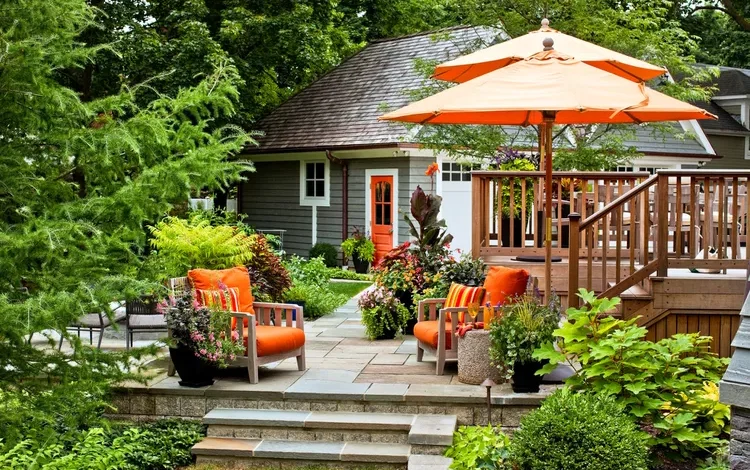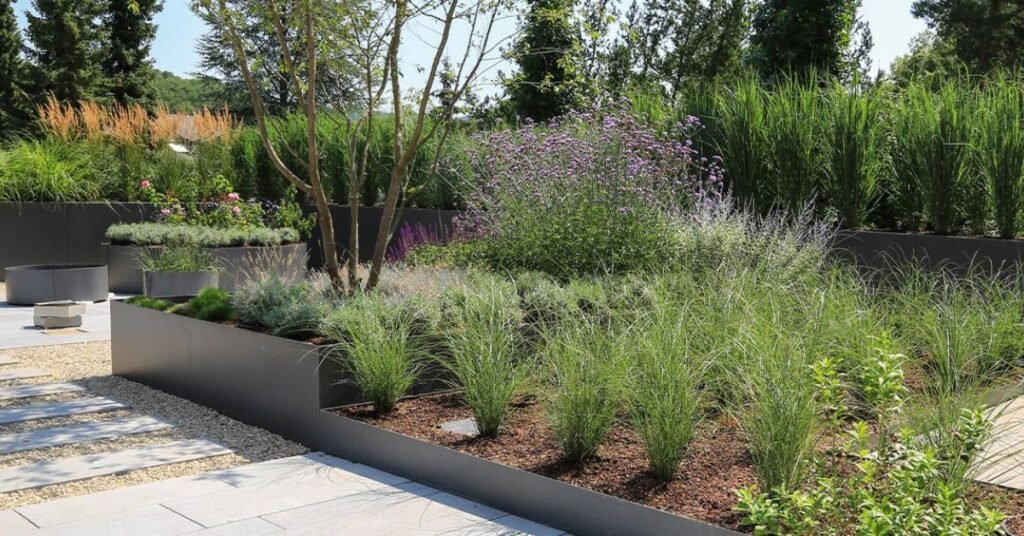
If you have never attempted to create a landscape & irrigation design before, you might find the numerous options available to you to be a little bit intimidating.
In what order would you like to incorporate the plants, and where should they be placed? Should bed lines and trails be formed in a straight line or should they be curved?
What about including accessories like chic benches, eye-catching planters, and birdbaths into your garden in order to attract a variety of colorful wildlife? Because many of the same concepts that influence the arrangement of your room inside can also lead your designs outside,
it might be helpful to conceive of a space in your yard as you would a room inside your home. It is important to take into account the following seven factors in order to get your new landscaping project off to a spectacular start.
7 Tips For Landscape & Irrigation Design

1. Determine the requirements and preferences of the landscape.
Create a list of the things you require and the things you desire. Will your children require a place to play? Would you like to cultivate some vegetables?
Would it be enjoyable for your family to get together on a patio around a fire pit table (such as the Better Homes & Gardens Carter Hills Propane Fire Pit Table, which can be purchased at Walmart for 349 SAR)?
Do some very rough sketches of the yard with some ideas about where you want to position things; this is a terrific organizational element for landscape & irrigation design for those who are just starting.
As stated by Marianne Lipanovich, the author of the Big Book of Garden Designs, they don’t need to be master plans; rather, they might simply be concepts.
Just a few lines and a handful of circles were all that she had to work with as she was sketching out her new front yard landscaping design.
Trying out different concepts is simple and does not require a significant amount of time or dedication.
2. Pay Attention to the Location
Examine the patterns of the sun and the wind. It is possible that you would like to install a patio on the west side of the home; but, because it will receive a great deal of afternoon sunlight, the temperature around dinnertime in August may be uncomfortably high.
In addition, a fire pit will be swiftly extinguished if there is a whistling breeze around the corner. Those are some of the most typical errors that novices make when designing their backyard landscape.
Before you set out patio furniture (like this Better Homes & Gardens Willow Sage All-Weather Wicker Outdoor Cuddle Chair and Ottoman Set, which can be purchased at Walmart for 369 SAR), your design should take into consideration the effects that the sun and wind have at various times of the day and throughout the year.
A soil test and the determination of your Hardiness Zone are two more things that should be done before planting.
3. Invest some time in your outdoor space.
It is possible to make decisions regarding your yard that will not be beneficial in the long run if you jump to conclusions too quickly. Before making any adjustments, you should give it some time to settle in.
According to Lipanovich, as you spend more time outside, you will begin to recognize places that you would like to go and sit that you would not have thought of at first.
Choose patio furniture and accessories that are versatile and can be used in multiple sections of your yard, such as the Better Homes & Gardens Davenport Outdoor Console Table, which can be purchased at Walmart for 347 SAR.
4. Begin Very Small
On your favorite home and garden program, whole outside makeovers may indeed be completed in just three days.
However, since they have a large team to undertake the heavy lifting, this is not a situation that the majority of people who are just starting in home gardening would like.
Slowly formulating a design and taking pleasure in the process are both essential components of building a landscape that you will adore. The first step in your master plan should be to create a modest flower garden.
You should go out and work on it for an hour or two whenever you have the time, and you should worry less about filling everything up right now.
In his article, Lipanovich observes that when you take your time when designing your own landscape, you are less likely to make mistakes or take shortcuts that you would come to regret in the future.
5. Determine a Point of Focus
The inclusion of a focus point or sequence of focal points is a fundamental idea that may be easily implemented in any garden design that is of high quality.
That could be a sculpture, a very breathtaking tree, or a group of plants. According to Lipanovich, you should allow the design to pull your gaze throughout the terrain.
6. Pay Attention to the Scale and Pacing
Your yard will have a more put-together appearance if you pay attention to scale and pacing, which is the principle in landscape & irrigation design that is the most challenging for novices.
For example, there will be towering plants against a structure or in the back of a flowerbed, and there will be trails that bring visitors through the space. There will also be variances in the size, shape, and color of the plants.
Lipanovich places a strong emphasis on the significance of achieving a healthy equilibrium between new elements and aspects of repetition.
A sense of coherence can be achieved by repetition, but simultaneously, you do not want it to become monotonous. It is preferable to have a few fresh elements here and there rather than having a variety of elements throughout.
7. Don’t be afraid of change
It is important, to be honest about what is working for you and what is not working in your design unless you are extremely committed to something special.
Even Lipanovich has realized that she has come to realize that certain aspects that she formerly admired no longer correspond to her style. Experimenting and editing as you go is perfectly acceptable.
If you are just starting in landscape & irrigation design, remember that patience is essential.
If you find that all of that barren space is too much to look at and the children and dogs are stumbling around in the mud, you can rely on temporary solutions to cover an area while you figure out what you want to do.
For example, you might plant some annuals, mulch, and groundcovers that grow quickly.
Additionally, Lipanovich suggests that annuals and small perennials be used in the vicinity of larger plants that require additional time to develop and fill in.
If, at a later time, you discover that they are located in the incorrect location, you can always dig them up and shift them to a different one.
Here is another blog on Tree trimming
Questions That Are Frequently Asked:
What are the costs associated with designing a landscape?
Because of factors such as the size of your yard, the complexity of your plans, and the cost of plants in your region, the precise cost of planning a landscape might vary substantially from one person to the next.
With a pro-vetted plan and plants, you may anticipate spending anywhere from 1,000 SAR to 10,000 SAR or more. On the lower end, you should expect to pay approximately 1,000 SAR.
Which aspects of a landscape & irrigation design are considered to be the most important?
Texture, color, scale, line, and form are the five primary principles that are utilized in landscape & irrigation design principles.
These pillars are relied on by professional designers to create a design that is not only attractive but also suitable for the current season, timeless, and balanced.
In the realm of landscape & irrigation design, what are some of the most prevalent styles?
As is the case with all kinds of interior design, homeowners have a wide variety of options to select from when it comes to landscape & irrigation design.
The English garden, the Japanese garden, the French garden, and the native garden are among the most well-known and easily recognizable types of floral arrangements.
How can I benefit from the assistance of a professional landscape & irrigation designer?
Working with a professional landscape & irrigation designer can be a beneficial addition to your team, especially if you are beginning the process of designing the exterior of your home from the ground up.
Not only are they able to assist you in designing the perfect arrangement for your house and style, but they are also able to guide you in the direction of the plants that are most suitable for your location and provide you with advice on how to care for them.

